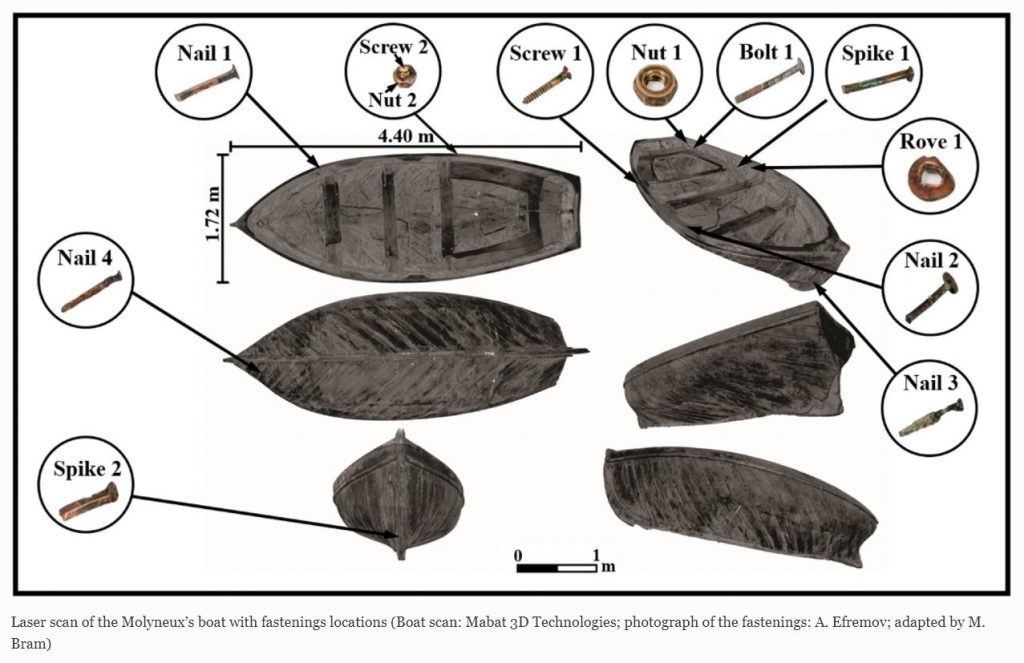Congratulations to M. Bram, N. Iddan, D. Ashkenazi and D. Cvikel, for having their paper “The Nineteenth-Century Molyneux’s Boat: Archaeometallurgical Perspective of its Metal Fastenings”, published in “Metallography, Microstructure, and Analysis” (2020, vol. 9: 721–743), selected as an Editor’s Choice article for 2020!
Read the full paper here.

The 4.4-m-long vessel designated as Molyneux’s boat was built in England in 1836. During its conservation in 2008, metal fastenings were retrieved, and 12 of them were examined by XRF, metallographic and multifocal light microscopy, microindentation hardness measurement and SEM–EDS analysis. The results show the use of manufacturing techniques developed at different times: the copper fastenings were made by traditional methods—intensive hammering to their final shape followed by annealing; the screws and nuts were made of brass containing ~ 36 wt% Zn and were probably a post-1848 product; and the bolt was made of low-carbon steel (produced by the Bessemer process) and shaped by plastic deformation, perhaps through a thread-rolling process. The bolt was galvanized, thus most probably manufactured after 1856. It appears that the boat was originally built using copper fastenings, and some of which were replaced by galvanized bolts and brass screws during minor refitting.
Photo by: A. Efremov; adapted by M. Bram

